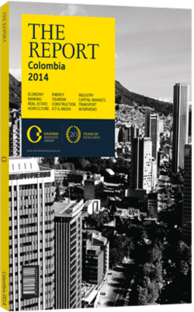OBG talks to José Alberto Vélez Cadavid, President, Grupo Argos

Interview: José Alberto Vélez Cadavid
Can the construction sector cope with the latest infrastructure concessions?
JOSE ALBERTO VÉLEZ CADAVID: We believe we can cope. On the one hand, we are very satisfied with how the Colombian government has structured key projects in such a diligent and detailed way. On the other hand, Colombian engineering firms have experience abroad in construction and infrastructure projects, and have also been open to partnerships with renowned international firms. As such, they are well prepared to undertake large infrastructure projects. In terms of construction materials, we are prepared and capable of dealing with higher demand. In Grupo Argos’ case, we have an advantage owing to our port facilities should construction groups require cement from abroad. Meanwhile, key plans have been laid out ahead of 2015, which is when the Ministry of Transport and the National Infrastructure Agency say the projects will actually start construction.
What are your thoughts on cement price agreements, and is the sector ready for new competition?
VÉLEZ CADAVID: There are six cement companies in Colombia, three large and three medium. The first point is that these are located in Bogotá, Cali and Barranquilla. This geographic dispersion proves the sector is not an oligopolistic industry. The second point, from our point of view, is that we are absolutely at ease that we have not acted at any time based on a cartel approach to price increases. Decisions involving prices are taken autonomously and independently. In our case, a preliminary analysis is made by a pricing committee, based on the increases in inputs. Price adjustments are made at the beginning of each year. During the period 2004 to 2014, the minimum wage increase was greater than the rise in cement prices. Moreover, inflation has also been higher than the increase in the average price of cement. This ultimately means that a person on minimum wage can purchase more bags of cement now than compared to 10 years ago. For this reason it is untrue to say that cement is currently more expensive.
When we talk about possible new players coming into the sector, it is important to mention that cement is a non-traded good and does not travel well. Thus, the best market protection is the product itself. To import cement requires time, the country’s ports do not have good facilities for discharging cement, and there is still a minimum of 220 km of track transport, which is difficult to navigate, to reach the nearest major city. At this point, cement will not arrive in easy conditions to be competitive. All in all, cement is a very local product.
Where should private investment be directed?
VÉLEZ CADAVID: Undoubtedly, it should be directed into infrastructure. This is where Colombia has the greatest weakness and the greatest challenges. The country has three mountain ranges, each with surrounding valleys, and major cities are far from the sea. For this reason, we need to make a big effort in infrastructure to boost the country’s competitiveness. This is where the potential for development and growth lies for any investor, both local and foreign. Infrastructure is not just about roads, but also ports, airports, railways, river navigation, power generation and transmission.
How big a role can equity investment companies play in project finance?
VÉLEZ CADAVID: Over the past 10 years Colombia has begun to experience a boom in foreign investment in light of the government’s work to improve security and investor confidence. The image of Colombia is very different nowadays from what it was in the 1990s.
We are the third-largest country in Latin America, with stable economic growth and a growing middle class. Owing to its significant market size, many investors are looking to Colombia rather than smaller economies with the same growth potential. For equity investors we need to develop a much deeper and broader market alongside a higher volume of trading. This way, foreign investors in search of making large transactions would feel more confident and incentivised to come.
You have reached the limit of premium articles you can view for free.
Choose from the options below to purchase print or digital editions of our Reports. You can also purchase a website subscription giving you unlimited access to all of our Reports online for 12 months.
If you have already purchased this Report or have a website subscription, please login to continue.

